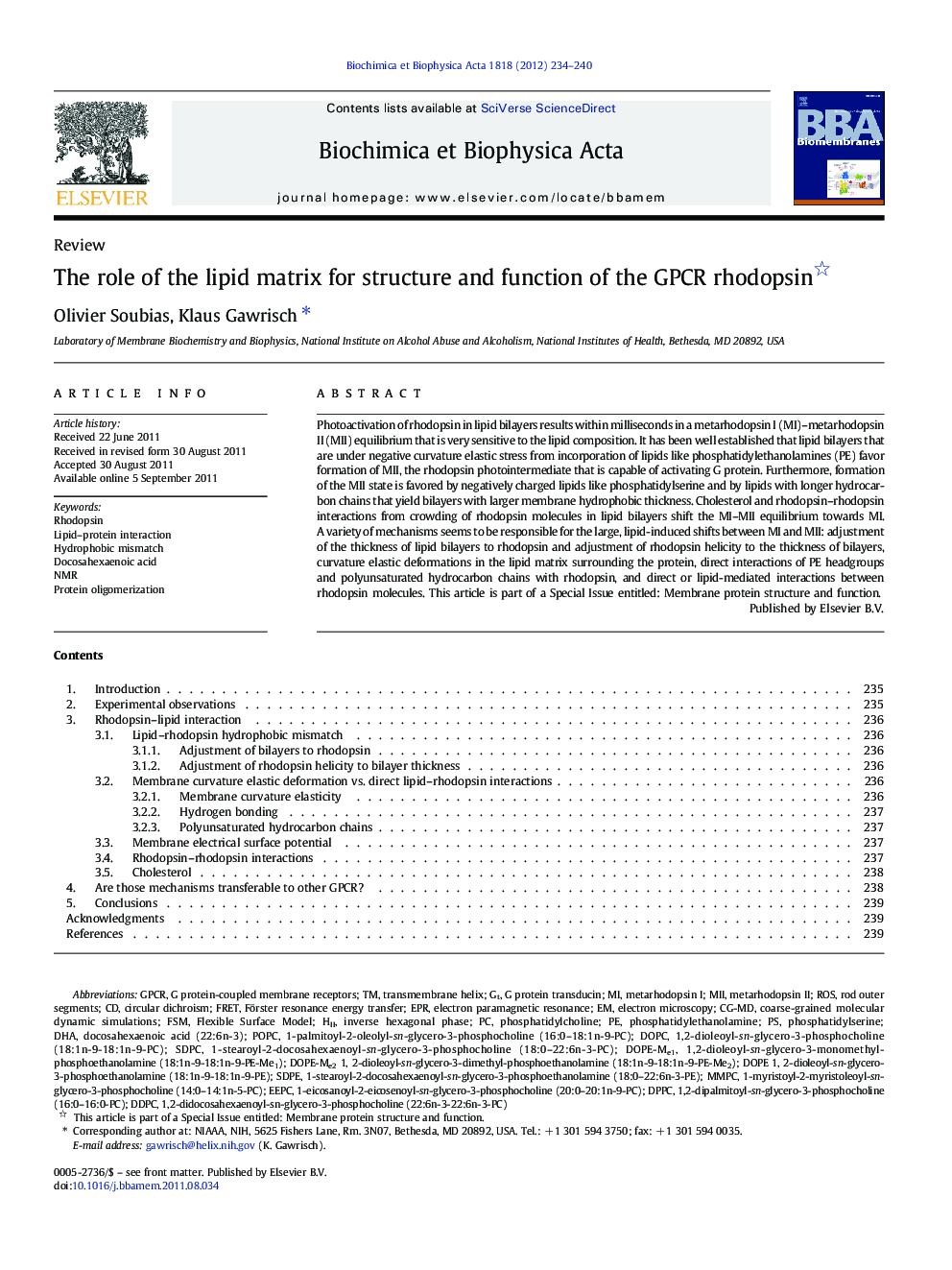| Article ID | Journal | Published Year | Pages | File Type |
|---|---|---|---|---|
| 1944503 | Biochimica et Biophysica Acta (BBA) - Biomembranes | 2012 | 7 Pages |
Photoactivation of rhodopsin in lipid bilayers results within milliseconds in a metarhodopsin I (MI)–metarhodopsin II (MII) equilibrium that is very sensitive to the lipid composition. It has been well established that lipid bilayers that are under negative curvature elastic stress from incorporation of lipids like phosphatidylethanolamines (PE) favor formation of MII, the rhodopsin photointermediate that is capable of activating G protein. Furthermore, formation of the MII state is favored by negatively charged lipids like phosphatidylserine and by lipids with longer hydrocarbon chains that yield bilayers with larger membrane hydrophobic thickness. Cholesterol and rhodopsin–rhodopsin interactions from crowding of rhodopsin molecules in lipid bilayers shift the MI–MII equilibrium towards MI. A variety of mechanisms seems to be responsible for the large, lipid-induced shifts between MI and MII: adjustment of the thickness of lipid bilayers to rhodopsin and adjustment of rhodopsin helicity to the thickness of bilayers, curvature elastic deformations in the lipid matrix surrounding the protein, direct interactions of PE headgroups and polyunsaturated hydrocarbon chains with rhodopsin, and direct or lipid-mediated interactions between rhodopsin molecules. This article is part of a Special Issue entitled: Membrane protein structure and function.
► Adjustment of the thickness of lipid bilayers to rhodopsin. ► Adjustment of rhodopsin helicity to the thickness of bilayers. ► Curvature elastic deformations in the lipid matrix surrounding the protein. ► Direct interactions of PE headgroups and polyunsaturated hydrocarbon chains with rhodopsin. ► Direct or lipid-mediated interactions between rhodopsin molecules.
